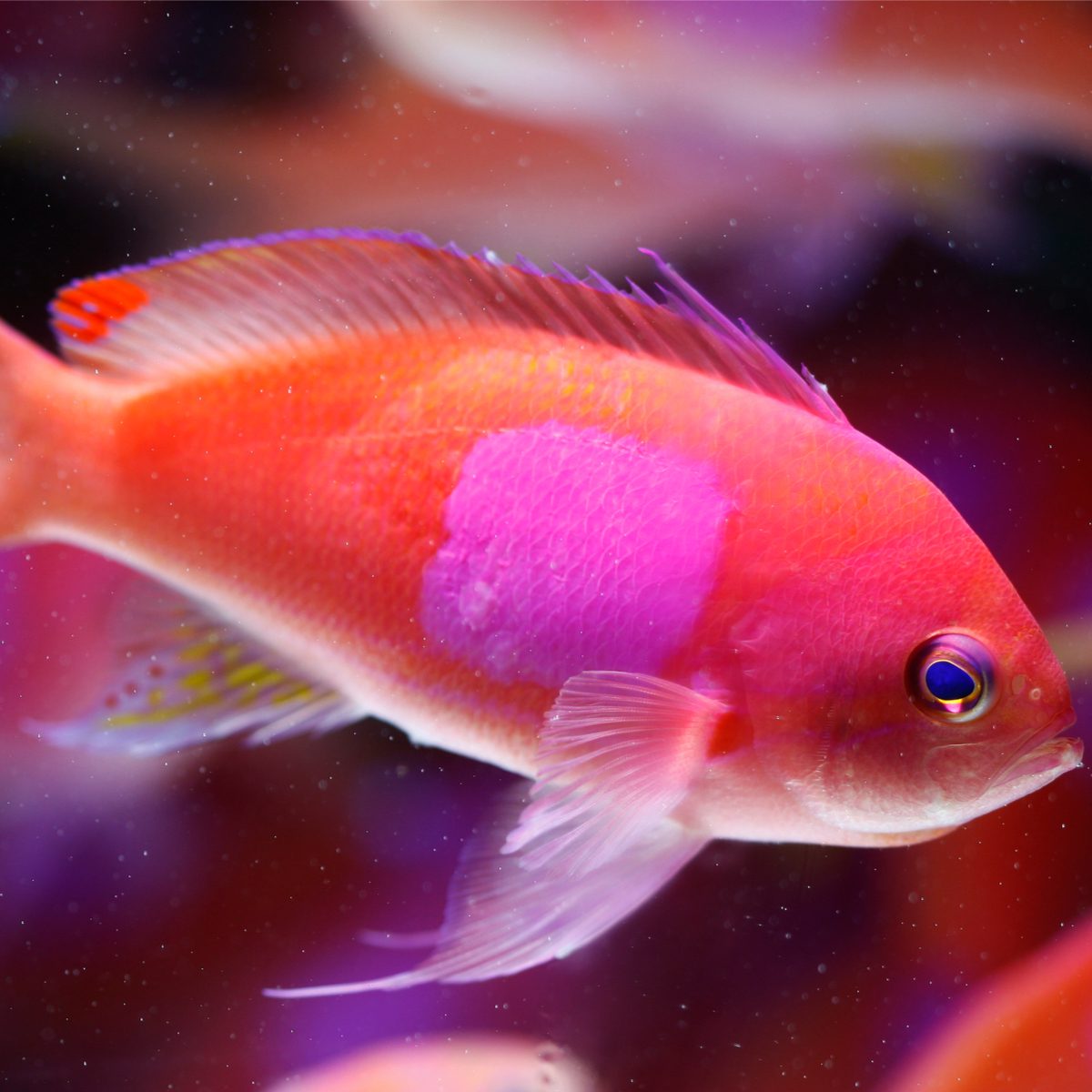Blood Spot Anthias
$72.99
Select Variant
It is the Blood Spot Anthias, also called known as the Yellow Lined Anthias, makes an excellent addition to the fish-only, invertebrate and reef tanks. Males are spotted with three lines of yellow and an orange area on the dorsal side of their fin. The red head fades into vibrant yellow, which extends into the tail.
This Blood Spot Anthias does best when it is kept with its own kind in tanks with at minimum one hundred and fifty-five gallon. In their natural habitats Yellow-lined Anthias are found in high reef faces and drop-off zones. In the aquarium at home they are Anthias usually reside within the center of the tank, but they appreciate the accessibility of a variety of hiding spots.
Anthias species share the characteristic that they are hermaphroditic. If the dominant male dies the most dominant female of the group is likely to change to replace it.
After acclimating to a fresh aquarium Anthias are best being fed a diverse diet consisting of mysis shrimp that are enriched and frozen and brine shrimp enriched in brine and eventually, they could eat quality flake foods provided in small amounts throughout the daytime. An attached refugium for the cultivation of amphipods and copepods will provide an ongoing supply of healthy living food to maintain the planktivore activity.
Approximate Purchase Size: Medium: 2-1/4" to 3-1/2"
- Description
- Additional Information
- Reviews
Blood Spot Anthias Overview
The Blood Spot Anthias, also known as the Yellow Lined Anthias, is a striking addition to any aquarium. Its vibrant coloration and unique markings make it a favorite among aquarists.Key Characteristics of Blood Spot Anthias
- Males: Display three white lines across the body, a pinkish hue, and a distinctive red spot on the dorsal fin. The red fades to vibrant yellow towards the tail.
- Females: Generally pink with no red spot on the dorsal fin or body. They lack the yellow lines seen in males.
Habitat and Tank Requirements
- Tank Placement: Prefers a large tank with ample space for schooling. Provide caves and rocky structures for hiding. Ensure intense water flow and ample open space in the upper regions of the tank.
- Lighting: Prefers lower light conditions initially but can adapt to brighter lighting over time.
- Tankmates: Choose calm tankmates. Introduce the Blood Spot Anthias before other fish to reduce stress during acclimation.
Diet and Feeding
- Diet: Thrives on a varied diet including finely chopped fresh or frozen meaty foods such as mysis shrimp, squid, fish flesh, and shrimp. Clams are also beneficial.
- Feeding Frequency: Feed at least twice a day. Dispense food into water currents to ensure it reaches the fish.
- Acclimation: If feeding is challenging, try fortified brine shrimp until the fish accepts other foods, including frozen and fresh marine fish and invertebrate flesh.
Behavior and Care
- Hermaphroditic Trait: Like other anthias species, Blood Spot Anthias are hermaphroditic. If the dominant male dies, the largest female may transition to become a male.
- Acclimation: Initially difficult to acclimate due to their deepwater origins and sensitivity to changes. Provide a stable environment with proper hiding spots and lighting.
Approximate Purchase Size
- Medium: 2-1/4" to 3-1/2"
LINKS to follow:
size
Large, Medium, Small
Units
1
Weight
6 lbs
Dimensions
1 × 1 × 1 in














Reviews
There are no reviews yet.